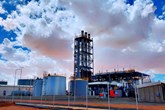Squeezed on pricing, iron ore producers turn to batch-level tracking
Published by Will Owen,
Editor
Global Mining Review,
Juliana Bruwer, Product Expert in SAP’s Industry Business Unit for Mill Products and Mining, discusses how iron ore producers – facing pricing pressures as steelmakers demand lower costs – are turning to batch-level tracking and advanced digital tools as essential solutions to meet regulations, cut emissions, and stay competitive in a low-grade ore era.
The era of premium prices for high-grade iron ores have reached a critical tipping point, and the implications for the industry are profound. The mining industry’s foremost challenge is to minimise operating costs as steelmakers squeeze iron ore prices to compensate for weak steel demand. This shift in product strategy opens up new markets as feed for direct reduction steelmaking.1
More for less
The issues with mining and processing low-grade iron ore are familiar. It takes more energy, water, chemicals, and labour, producing more gangue and emissions, to make less iron. But there is a silver lining to low-grade ores: It fuels innovation, which in turn can unlock new ore bodies. Several companies are already planning for, investing in, and operating facilities to process low-grade ore.2,3,4
In metals, the gradual shift away from coal-based technology is also afoot. However, only a fraction of high-quality feedstocks are suited for low-emissions steelmaking technologies involving direct reduced iron (DRI) with hydrogen. It is no surprise, then, that majors like BHP, Rio Tinto, and others are joining forces with steelmakers to turn low-grade ore into a vital commodity.5,6
This flurry of investment in innovative technologies in the mining and metal industries brings with it the motivation to collect more granular operational and compliance data to harness actionable insights.
Regulatory ‘sticks’ are on the way…
Regulations are tightening globally, and finding the right balance between profits while steering investment towards future-facing technologies and products will be key for survival. From next year, steel sold in the EU will need a Digital Product Passport, designed to provide comprehensive information about a product’s origin, quality, and lifecycle environmental impact.7 This is on top of the EU Carbon Border Adjustment Mechanism, which will sprout financial teeth in 2026, requiring carbon certificates for imported steel.8
China’s Emissions Trading System (ETS) is expanding to cover steelmaking, and while scope 3 mining emissions do not count for now, they may not be far behind.9 More broadly, the IFRS’s Sustainability Disclosure Standards aim to establish global rules to ensure comparability and auditability for sustainability reporting – a parallel to those governing financial statements.
… but there are also carrots
Those regulatory ‘sticks’ will require a level of tracking detail that, for many firms, remains beyond reach. There are other incentives to change that. Besides assuring product quality and conformance, such detail can also help fetch a better price.
While there is currently no international consensus on what green steel is, the first regulator to step up is the EU, where a voluntary green-steel label will be announced in 2025.10 Another incentive is green public procurement programmes. These prioritise the substantial procurement power of governments to support steelmakers that can demonstrate sustainable practices throughout the supply chain.11 Here, too, success will ultimately depend on an enhanced ability to collect and share data down to the batch level.
Batch-level specificity: An emerging requirement
Detailed data on a given batch of steel – and, by extension, the nature of the ores or recycled content used as inputs – is needed to show proof to buyers. Greater specificity in collecting, analysing, and sharing environmental data at product level should be a central focus.
From the IT perspective, that starts with mining firms tracking both quality and environmental data. These details will, sooner than later, need to be exchanged electronically with not only steelmakers, but their customers as well as regulators and investors.
Modern ERPs enable continuous monitoring of emissions, energy, water, and waste at relevant points of the operations, which in turn empowers proactive decision-making based on how KPIs are performing against targets. That helps managers adjust quickly, rather than recognising an issue months later when an annual environmental report comes due.
These cloud-based solutions increasingly incorporate AI. One example is in speeding up environmental-report generation through automated data gathering, generative text, and visualisation. A second is in through intelligent emission-factor identification by matching products to thousands of lifecycle-assessment database entries. That avoids a lot of manual, tedious work. A third example is green-ledger functionality that tracks a company’s carbon budget with the precision of a financial budget.
These and other capabilities help reduce costs, mitigate risk, and drive business performance beyond regulatory compliance. Given the scalability of cloud-based ERP solutions, mining and mill companies of all sizes can take advantage.
The industry must continue to adapt to the era of low-grade iron-ore. Fortunately, IT solutions that can support them during the transition are already available.
References
Available on request.
Read the article online at: https://www.globalminingreview.com/special-reports/15072025/squeezed-on-pricing-iron-ore-producers-turn-to-batch-level-tracking/
You might also like
Renewal of Wärtsilä’s operation and maintenance agreement ensures continued production reliability for Mauritanian gold mine
Technology group Wärtsilä has renewed its operation & maintenance agreement with Tasiast Mauritanie Limited S.A., a subsidiary of the Canadian group Kinross Gold Corporation for another three years.

